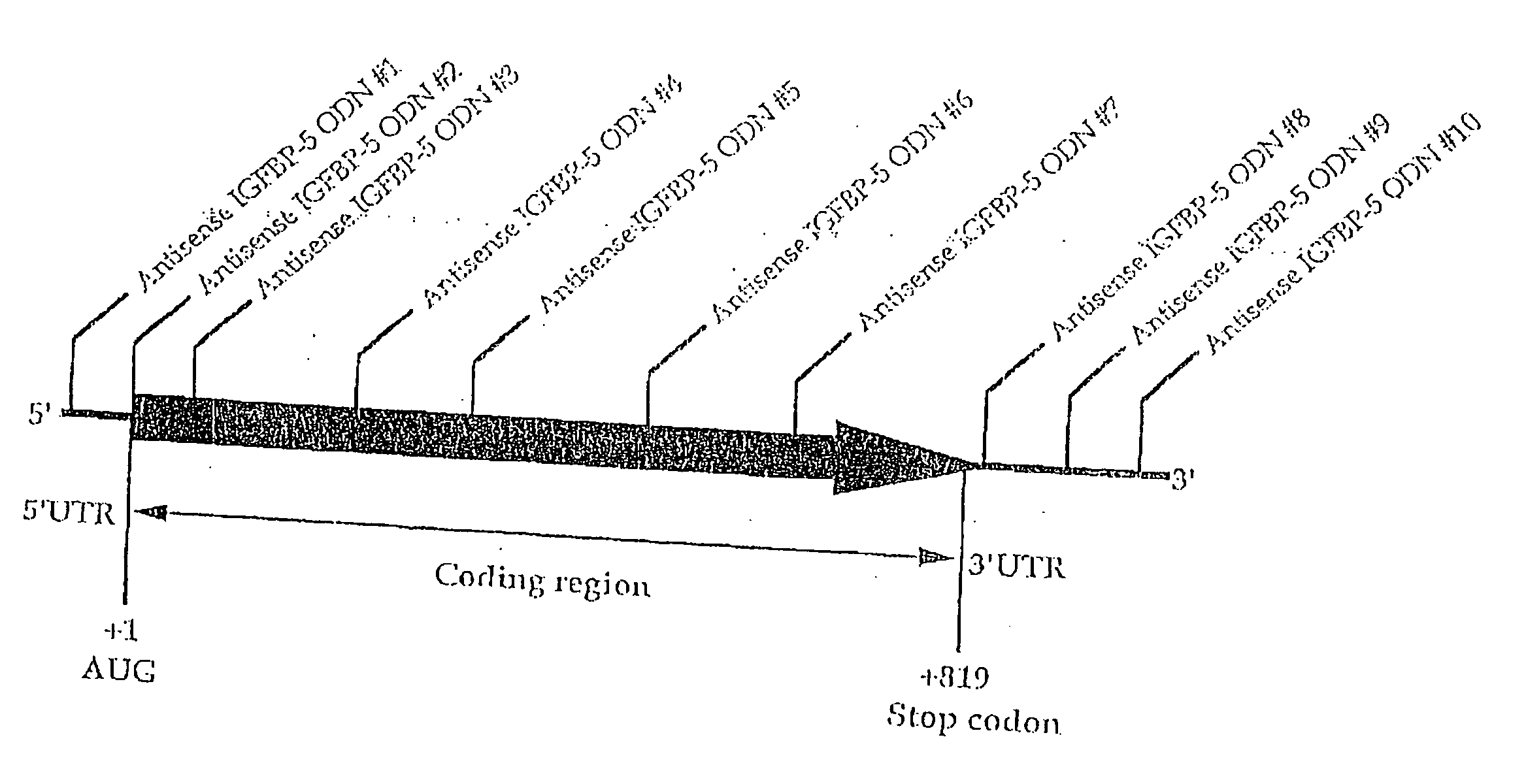Antisense Therapy for Hormone-Regulated Tumors
a hormone-regulated tumor and anti-sense therapy technology, applied in the field of hormone-regulated tumors, can solve the problems of incomplete castration-induced apoptosis, regression of disease, and tumor cell proliferation, and achieve the effects of reducing tumor cell proliferation, preventing the progression of prostate tumors, and reducing the risk of cancer
- Summary
- Abstract
- Description
- Claims
- Application Information
AI Technical Summary
Benefits of technology
Problems solved by technology
Method used
Image
Examples
example 1
[0036] Shionogi tumor model experiments were performed using cells from the Toronto subline of transplantable SC-115 AD mouse mammary carcinoma, and maintained in Dulbecco's modified Eagle medium (Life Technologies, Inc., Gaithersburg, Md.) supplemented with 5% heat-inactivated fetal calf serum. For in vivo studies, approximately 5×106 cells of the Shionogi carcinoma were injected subcutaneously in adult male DD / S strain mice. When the Shionogi tumors became 1 to 2 cm in diameter, usually 2 to 3 weeks after injection, castration was performed through an abdominal incision under methoxyflurane anesthesia. Details of the maintenance of mice, tumor stock and operative procedures have been previously described. Bruchovsky et al., Cancer Res. 5); 2275-2282 (1990); Rennie et al., Cancer Res. 48: 6309-6312 (1988); Bruchovsky et al., Cell 13: 272-280 (1978).
[0037] Mice were randomly selected for treatment with murine phosphorothioate antisense IGFBP-5 ODN (Seq. ID No. 1) or a mismatch cont...
example 2
[0039] To examine the effects of in vivo ODN treatment on levels of IGFBP-5 mRNA, Northern blot analysis was performed on Shionogi tumor tissue from mice. Mice were treated daily, beginning the day of castration, with 15 mg / kg of antisense IGFBP-5 ODN (n=3) or the mismatch control (n=3) by intraperitoneal injection. On the fourth day after castration, tumor tissues were harvested and analyzed by Northern blot for IGFBP-5 mRNA. Antisense IGFBP-5 ODN resulted in a 61% reduction in IGFBP-5 mRNA levels in Shionogi tumors compared to mismatch control ODN treated tumors. (FIG. 2).
example 3
[0040] The sequence selectivity of the antisense IGFBP-5 ODN (Seq. ID. No. 1) was confirmed by comparing expression levels of IGFBP-5 mRNA in Shionogi tumor cells maintained in vitro, after treatment with varying levels of antisense IGFBP-50N (Seq. ID No. 1) or a mismatch control (Seq. ID. No. 12). To facilitate uptake of the ODNs into the cells, the ODNs were formulated in a cationic lipid carrier (Lipofectin™, (Life Technologies, Inc.)). Cells were treated twice over a period of two days using the following protocol. Cells were preincubated for 20 minutes with 4 μg / ml of lipofectin in serum free OPTI-MEM™ (Life Technologies, Inc.) and then incubated with the medium containing the selected concentration of ODN and lipofectin for four hours. The medium was then replaced with the standard culture medium described in Example 1.
[0041] The amount of IGFBP-5 mRNA in the cells was evaluated using Northern blot analysis. As shown in FIG. 3, daily treatment of Shionogi cells with antisense...
PUM
| Property | Measurement | Unit |
|---|---|---|
| diameter | aaaaa | aaaaa |
| concentration | aaaaa | aaaaa |
| concentrations | aaaaa | aaaaa |
Abstract
Description
Claims
Application Information
 Login to View More
Login to View More - R&D
- Intellectual Property
- Life Sciences
- Materials
- Tech Scout
- Unparalleled Data Quality
- Higher Quality Content
- 60% Fewer Hallucinations
Browse by: Latest US Patents, China's latest patents, Technical Efficacy Thesaurus, Application Domain, Technology Topic, Popular Technical Reports.
© 2025 PatSnap. All rights reserved.Legal|Privacy policy|Modern Slavery Act Transparency Statement|Sitemap|About US| Contact US: help@patsnap.com



